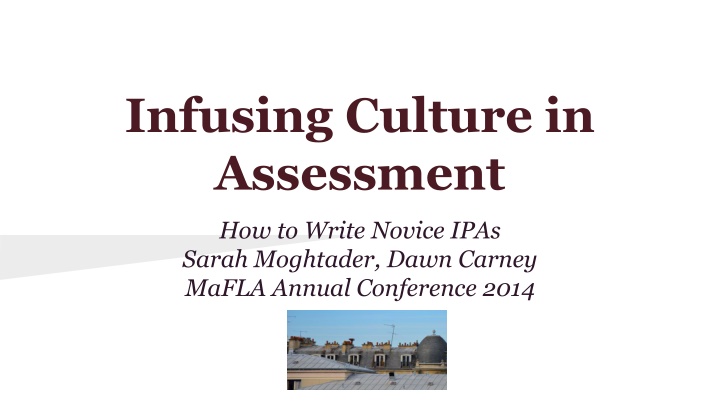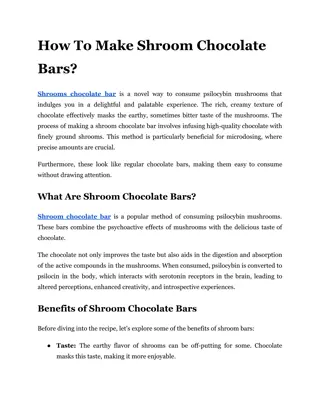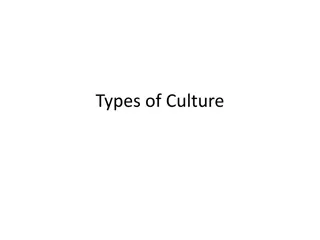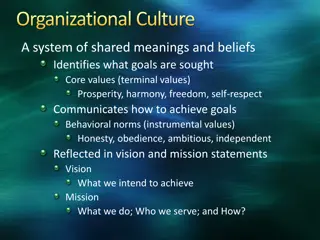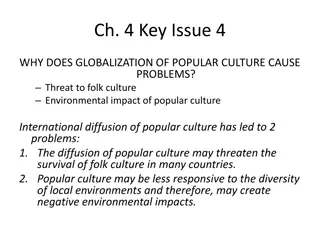Infusing Culture in Assessment
Explore the concept of IPAs (Integrated Performance Assessments) and proficiency levels in language teaching. Understand the different modes of communication, formative versus summative assessment, and the connection between performance and proficiency in the classroom. Gain insights into assessing Novice learners and enhancing language skills through tailored tasks.
Download Presentation

Please find below an Image/Link to download the presentation.
The content on the website is provided AS IS for your information and personal use only. It may not be sold, licensed, or shared on other websites without obtaining consent from the author.If you encounter any issues during the download, it is possible that the publisher has removed the file from their server.
You are allowed to download the files provided on this website for personal or commercial use, subject to the condition that they are used lawfully. All files are the property of their respective owners.
The content on the website is provided AS IS for your information and personal use only. It may not be sold, licensed, or shared on other websites without obtaining consent from the author.
E N D
Presentation Transcript
Infusing Culture in Assessment How to Write Novice IPAs Sarah Moghtader, Dawn Carney MaFLA Annual Conference 2014
Do Now: Partner turn and talk What is an IPA? Have you seen examples of IPAs that would work with your students? What is your students proficiency level? Are you aware of the books at the front of the room?
IPA Defined An assessment that features three tasks, one from each mode of communication, connected by a common theme.
The three modes of communication Interpretive Communication no interaction authentic documents created for and by speakers of the language Interpersonal Communication spontaneous Presentational Communication polished, practiced no interaction
Formative vs summative assessment Formative - assessments for learning - provide feedback during learning - practice - not graded Summative - assessments of learning - at the conclusion of an instructional period - degree to which the learner met the goals of instruction
Performance vs proficiency Performance - Based on instruction - Familiar content - In familiar instructional setting Proficiency - Independent of instruction - Broad content - What students can do regardless of setting
Performance & proficiency connected performance practice tasks and assessments in the classroom build toward increased proficiency for the learner
Proficiency levels Novice respond to simple questions use: isolated words lists of words memorized phrases some personalized re-combinations of words or phrases ask memorized, formulaic questions satisfy immediate needs WORD level
Proficiency levels Intermediate conversation partner in simple, direct conversations describe and narrate ask and answer simple questions handle survival language create with language SENTENCE level
Novice IPA from the field Infusing Culture through assessment: Aligned by a single overarching theme which is a topic of culture Use of authentic documents (texts created by native speakers for native speakers) in the interpretive tasks
Culture relationship between the products, practices and perspectives of people
Formative Assessment Presentational Writing Practice C1 Interpretive Practice C2 Interpersonal Practice Summative Assessment Assessment Introduction Presentational Speaking Assessment C1 Interpersonal Assessment C2 Interpretive Assessment C2
Clothing can-do statements I can name and describe different clothing and accessories. ask about and discuss clothing and accessories people wear and put on for different activities and in different seasons and weather. ask about and express opinions about clothing. shop for clothing and accessories. ask a salesperson useful questions that help me to purchase what I want or need to buy. express indecision about things I am considering buying. ask and tell how much something costs.
Interpretive practice Mon Pull
Interpersonal practice Role play a conversation between a salesperson and a customer who is shopping for items he or she will need for an upcoming camping trip or vacation. Salesperson I can ask a customer if he has made a decision. I can describe clothing for different activities and weather. I can ask for opinions about clothing and accessories. I can ask and tell how much something costs. Customer I can discuss clothing for different activities and weather. I can express opinions about clothing and accessories. I can ask if something is on sale and how much it costs. I can express indecision about things I am considering buying.
Presentational practice Create a guide of what to wear for different seasons and activities. You can imagine 5 outfits you wear yourself or a person your age wears. For each outfit name the item of clothing, describe it, say when or where it is worn and express your opinion about it.
Introduction You would like to start a conversation with your French pen pal about fashion. To get more information, you find a video on a French clothing website of a mock fashion show. First you will watch the video with your classmates, then you will discuss what you like and didn t like about the clothes, finally you will make and narrate a video of a fashion show to send to your penpal.
Interpretive Assessment Interpretive Video Dressing Story
Interpersonal Assessment After seeing a video of a fashion show of French teens, discuss the outfits you saw. Each student should include: Description of clothing and accessories Description of materials, fit and colors Comment on what you like and don t like about the clothing Ask your classmate what he likes and doesn t like about the clothing I can name and describe clothing and accessories. I can ask for opinions about clothing. I can express opinions about clothing.
Presentational Assessment You will organize a fashion show. You will model clothes on a runway, accompanied by an oral commentary. Each member of the group will be responsible for wearing one outfit and writing a description that another group member will present as the author models the clothing.
Implementation with Novice Students The National Standards Comparaisons circle asks us to have students compare C1 and C2. Novice students can start by defining C1. Scaffolding: Do a practice for each mode of communication. Do writing assignments to practice for speaking assignments. Start giving students IPAs from the lowest language level, learning the routine from the beginning will serve them well later. Students can evaluate each other using the rubric. As they evaluate their peer they will learn how to meet the requirements themselves.
Implementation with Novice Students Make sure in your Interpersonal Assessment you don t have one person playing the role of the native or using language you haven t taught. Novice students can t improvise. Students study can do statements instead of studying vocabulary lists. Your language students will learn from the beginning level how to use language, i.e. proficiency. Students learn from the beginning to speak spontaneously for Interpersonal tasks and there is no need to wean students from using scripts in later years. IPAs drive a method of instruction that gets learners from the Novice level of formulaic phrases to the Intermediate level of creating language.
Writing Rubrics Given (see in handouts): a novice interpersonal prompt an intermediate interpersonal prompt a sample rubric write a rubric for each prompt that corresponds to the level.
Bibliography Implementing Integrated Performance Assessment by Adair-Hauck, Glisan and Troyan, 2013 The Keys to Planning for Learning by Donna Clement and Laura Terrill, 2013 Photos by Alexandra Lecomte
